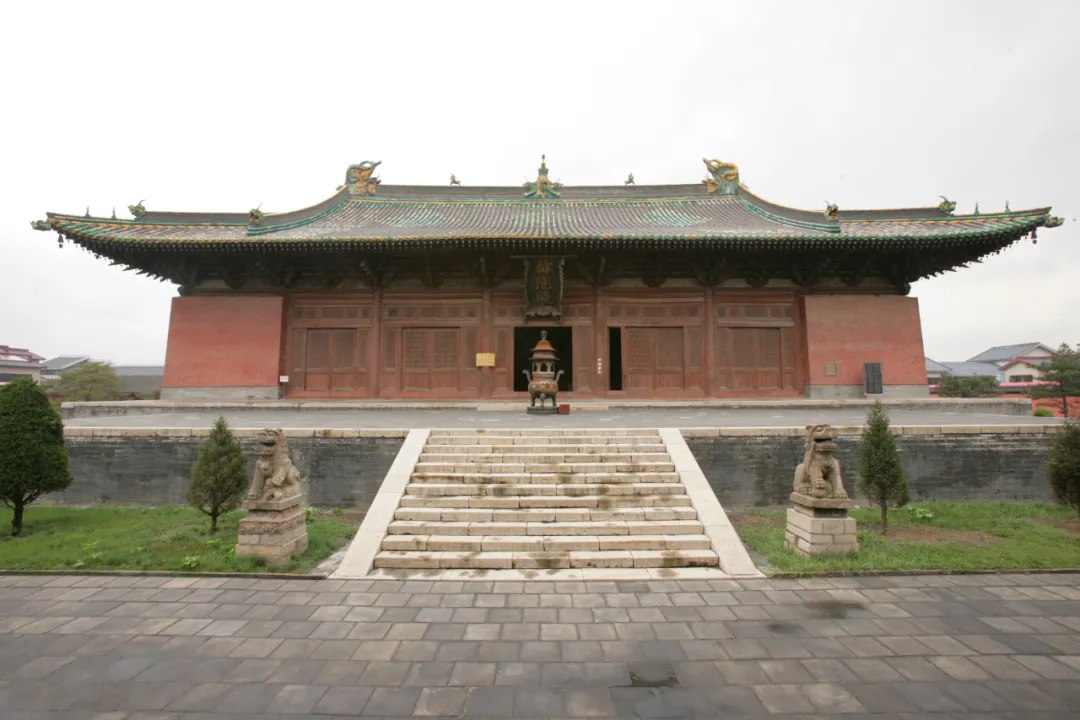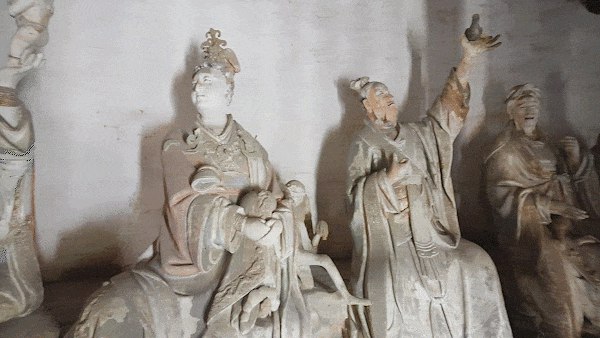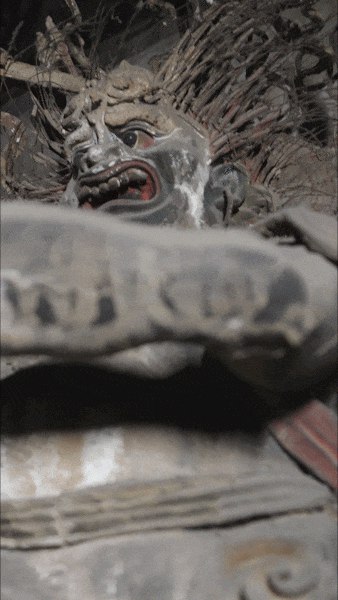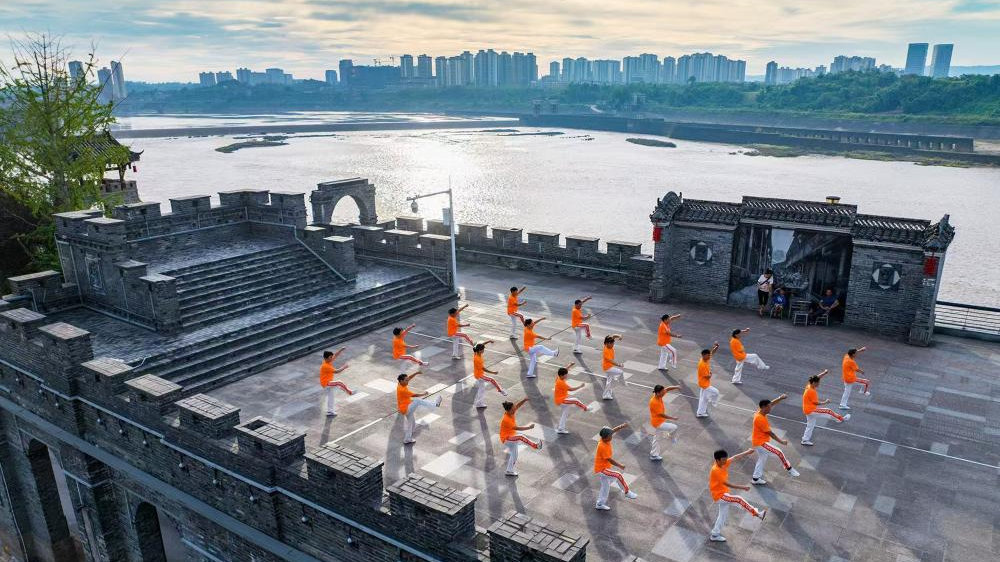'Black Myth: Wukong' shines spotlight on ancient Shanxi architecture
"Black Myth: Wukong," China's first big-budget video game, is drawing attention not just for its gameplay but for its use of real-world locations.
The game, released Aug. 20, features scenes based on ancient sites across China, appealing to history buffs and gamers alike.
According to data from the Shanxi Provincial Department of Culture and Tourism, 27 of the game's 36 locations are in north China's Shanxi Province.
Yungang Grottoes

The Yungang Grottoes in Datong city, Shanxi, are among China's most extensive ancient cave complexes. Cave No. 20 is considered representative of the site.
Xuankong Temple

Xuankong Temple in Hunyuan county, Datong, dates to the late Northern Wei Dynasty (386-534). Rebuilt over centuries, the temple clings to a cliff on Hengshan Mountain.
Huayan Temple

The Huayan Temple is located in Datong. It is a large and well-preserved temple from the Liao (907-1125) and Jin (1115-1234) dynasties. The buildings, sculptures, murals, caisson ceilings and other artworks from these dynasties exemplify their artistic prowess.
Sakyamuni Pagoda

The Sakyamuni Pagoda, also known as the Yingxian Wooden Pagoda, is located in Yingxian county, Shuozhou city. First constructed during the Liao Dynasty, the pagoda, built entirely of wood, has weathered earthquakes, wars and other challenges. Its intricate structure features countless mortise and tenon joints, a traditional woodworking technique where pieces interlock without nails or glue.
Chongfu Temple

Chongfu Temple, in Shuocheng district of Shuozhou city, was built during the Tang Dynasty (618-907) and rebuilt during the Yuan (1271-1368), Ming (1368-1644) and Qing (1644-1911) dynasties.
Foguang Temple

Foguang Temple, situated in Wutai county, Xinzhou city, was built during Emperor Xiaowen's reign in the Northern Wei Dynasty and reconstructed in the Tang Dynasty. Its architectural structures, sculptures, murals and inscriptions from the Tang Dynasty are renowned as the "four treasures."
Nanchan Temple

Nanchan Temple in Wutai county, Xinzhou city, is China's oldest extant wooden building from the Tang Dynasty. Despite renovations, the temple's Tang Dynasty color sculptures have preserved their original style, showcasing rare examples of the era's artistry.
Nanshan Temple

Nanshan Temple in Wutai county, Xinzhou city, dates back to the Liang Dynasty (502-557). It underwent major renovations during the Yuan Dynasty and was rebuilt during Emperor Guangxu's reign in the Qing Dynasty.
Known for its abundant carvings, the temple is often called a "carving art museum," featuring brick, stone and wood sculptures. It's considered the most ornate temple on Mount Wutai, one of China's four sacred Buddhist mountains.
Hall of Guanyin

The Hall of Guanyin, or Hall of Avalokitesvara Bodhisattva, is in Luzhou district, Changzhi city. Established during Emperor Wanli's reign in the Ming Dynasty and repaired in the Qing era, it houses over 500 statues with lifelike expressions. The hall is renowned as a masterpiece of Ming Dynasty artistry.
Chongqing Temple

Chongqing Temple in Changzi county, Changzhi city, was originally built during the Northern Song Dynasty (960-1127). It underwent expansion and renovation during the Ming and Qing dynasties.
Guangsheng Temple

Guangsheng Temple, located in Hongdong county, Linfen city, dates back to the Eastern Han Dynasty (25-220). It was rebuilt multiple times during the Tang, Song, Jin and Yuan dynasties.
Xiaoxitian Temple

Xiaoxitian Temple in Xixian county, Linfen city, was first built during Emperor Chongzhen's reign in the Ming Dynasty. Most of its existing structures date to the late Ming era. The main hall houses over 1,000 clay statues of various sizes.
Yuhuang Temple

Yuhuang Temple in Zezhou county, Jincheng city, has an unknown founding date. It has undergone numerous renovations and repairs since the Song and Jin dynasties.
Tiefo Temple

Tiefo Temple, located in Gaoping, a county-level city under Jincheng's administration, dates back to the Ming and Qing dynasties. Its main hall houses 27 Ming Dynasty color sculptures. These sculptures feature prominent outlines, exaggerated expressions and richly layered clothing patterns.
Shanxi Province has 53,875 immovable cultural relics and 531 nationally protected key historical and cultural sites, the most in China.
The province's 28,027 ancient buildings comprise about 10 percent of the national total. Of these, 515 wooden structures date to the Yuan Dynasty or earlier.
Shanxi houses China's only three remaining wooden buildings from the Tang Dynasty. It also has over 12,000 color sculptures and more than 50,000 square meters of murals from the Tang Dynasty and later periods.
Photos by: Lu Pengyu, Wang Chaoqun, Zhai Tianchi, Yang Guojun
Photos
Related Stories
- Hit game boosts sales of related products
- Chinese video game "Black Myth: Wukong" takes U.S. market by storm
- "Black Myth: Wukong" becomes smash hit with over 10 million copies sold
- World's largest games event gathers global game developers, welcomes more Chinese exhibitors
- Chinese hit game "Black Myth: Wukong" sells 10 million copies in three days
- Video game based on classic novel goes viral
Copyright © 2024 People's Daily Online. All Rights Reserved.









